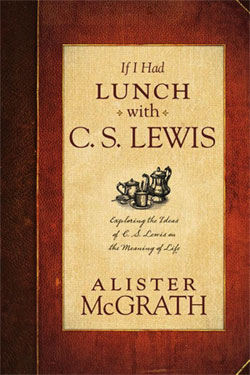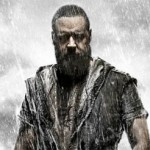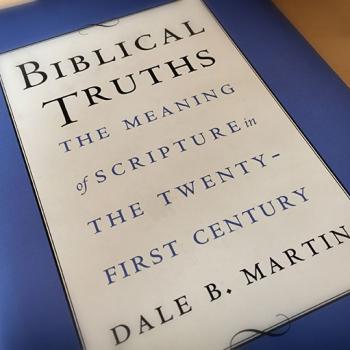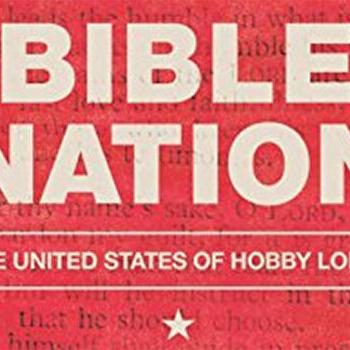 “Which story are you in? Have you chosen your story wisely? Have you challenged the story you tell yourself, if it doesn’t align with reality?”
“Which story are you in? Have you chosen your story wisely? Have you challenged the story you tell yourself, if it doesn’t align with reality?”
So asks C.S. Lewis during an imagined lunchtime conversation in Alister McGrath’s new book “If I Had Lunch with C.S. Lewis.” (Tyndale House, 2014) McGrath uses Lewis’s writings and biography as a springboard to explore important questions of life and faith.
In chapter 3, “A Story-Shaped World,” he examines how and why Lewis came to write the Chronicles of Narnia and the importance of the Narnia stories as representations of the Christian story.
Lewis saw stories as a means to better understand the deep truths of life and as a way of “sneak[ing] past the ‘watchful dragons’ of a dogmatic rationalism.” For Lewis, stories are able to make theological ideas intelligible, making them “real” in a way that dry exposition never could.
As a young man Lewis struggled to understand what story he inhabited and what relevance Christianity had to his life. It was through his friend J.R.R. Tolkien that he came to understand Christianity as a “true myth,” a story that “unifies and transcends” the “fragmentary and imperfect insights” of our lives.
McGrath says that “For Tolkien, the Gospels narrate ‘a story of a larger kind,’ which embraces what is good, true, and beautiful in the great myths of literature, expressing it as ‘a far-off gleam or echo of the evangelium in the real world.’” It was this conception of Christianity that captured the mind and imagination of Lewis and that shaped his Christian life.
McGrath also confronts the conundrum that we all must face in relation to the stories we encounter: which story can we trust? Not all stories are compatible; the story of secular humanism stands at odds with the story of Christianity, stories of nihilism are opposed to stories of hope. Do we inhabit “A tale told by an idiot, full of sound and fury, signifying nothing?” Or are we part of a deeper narrative, one that is full of truth and meaning?
According to McGrath, “In the end, we have to decide for ourselves which is right. And having made that decision, we then need to inhabit the story we trust.” We must trust the story that is the most plausible, that best unifies the individual stories of our disparate lives. “Our deepest intuitions point us to the true meaning of things; that there is indeed something beautiful and wonderful at the heart of the universe; and that this may be found, embraced, and adored.”
It is our role in this larger narrative that gives it meaning and purpose and it is through stories like Lewis’s Chronicles of Narnia that we are able to better understand what it means to be part of such a story. The stories of Narnia help us understand that being part of the Christian story is not a denial of who we are, but rather an opportunity to more fully realize our identity: “We do not lose our individuality; rather, we gain a new identity while still remaining individuals who are loved by God. In other words, we become new individuals without ceasing to be individuals.”
This is memorably illustrated in the story of the “undragoning” of Eustace Scrubb as told in Lewis’s “The Voyage of the ‘Dawn Treader.’” The boy Eustace has succumbed to the allure of gold and thus becomes trapped in the form of a dragon. It is only through the power of the lion Aslan that he is able to escape that fate and regain his humanity. Through this story we are able to see and experience our “selfish, fallen nature and the transforming power of divine grace.”
Trying to identify the story we are in is not merely an act of idle speculation, a meaningless and esoteric thought experiment. For Lewis (and McGrath), the story we choose to inhabit is vitally important because it “determines what we think about ourselves and consequently how we live.” Whether we realize it or not, our lives are part of a story, a story with countless characters, complexly interwoven plotlines and profound scenes of both triumph and failure.
Which features define your story?
Which story makes sense of your world and your experience?
Which story best ties all the other stories together in a grand metanarrative of life?
Which story are you in?
For further conversation about this book, be sure to visit its Patheos Book Club Page.
 Dan Wilkinson
Dan Wilkinson
Dan is a writer, graphic designer and IT specialist. He lives in Montana, is married and has two cats. He blogs at CoolingTwilight.com.












